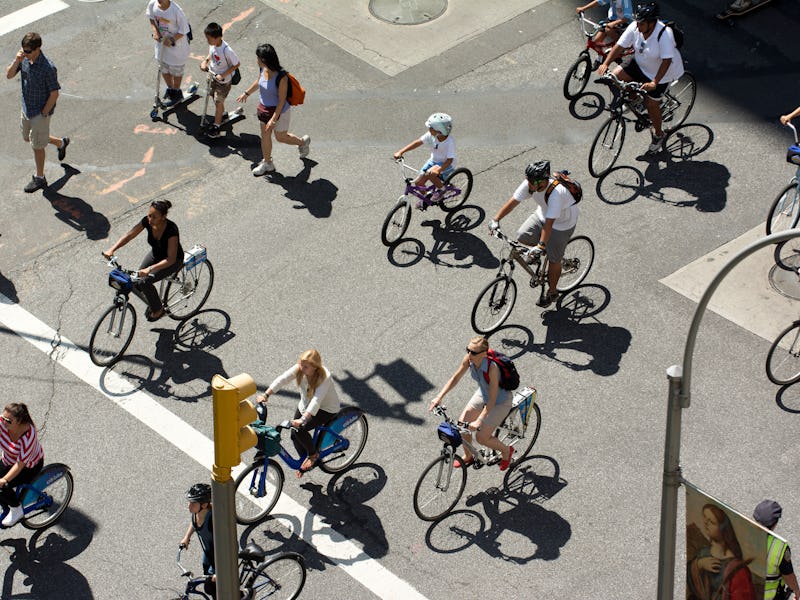One everyday action could help combat climate change, UN report reveals
The most surprising solution the report highlights is something billions of humans do every single day.

The United Nations’ Intergovernmental Panel on Climate Change (IPCC) releases a new report every few years. And each time the world takes a deep breath — the news isn’t easy to digest.
This week, the IPCC released the third part of its Sixth Assessment Report on the state of the climate crisis. The first section was released in August and the second this past March. The newest portion, entitled “Climate Change 2022: Mitigation of Climate Change”, reviews more than 18,000 scientific climate change papers and offers a grim outlook on the future of the world under global warming, but only if we fail to take immediate action to slash rising greenhouse gas emissions — the driving cause of climate change.
Climate solutions, as the report highlights, are abundant and becoming cheaper by the day, including renewable energy sources like wind, solar, and batteries for electric vehicles. But perhaps the most surprising solution the report highlights is something billions of humans do every single day: taking a walk.
Supporting people-centered urban design will have benefits for both public health and the planet, the IPCC report states.
In a live-streamed press conference, the IPCC Working Group III Vice-Chair, Diana Ürge-Vorsatz, summarized the challenges facing different industries — ranging from transportation to energy — as well as opportunities for these sectors to cut greenhouse gas emissions in half by 2030.
One of the sectors Ürge-Vorsatz covered was the “demands and services” sector, which includes services driven by individual consumers’ actions. According to the report summary covered in the press conference, collective changes to our behavior and lifestyle — especially among wealthier individuals — have the potential to reduce global greenhouse gas emissions by 40 to 70 percent so long as the necessary infrastructure policies are in place to support those lifestyle changes.
According to Urge-Vorsatz, out of the 60 behavioral and lifestyle changes that the report authors analyzed, the most impactful action was “switching to walking and cycling and using electrified transport.”
The push for electrified transport isn’t exactly surprising, given that many world leaders — including President Biden — already advocate for electric vehicles and buses. But the report also goes one step further, implying that it’s not enough to just encourage everyone to buy an electric vehicle to combat climate change. Instead, we need to switch over to using our bodies by walking and cycling more to get to our destinations, thereby building a healthier planet and society.
Supporting walking and cycling — both low or zero-carbon emitting activities that also benefit human well-being — seems like a no-brainer. Yet, current policies and urban design prioritize car-centric lifestyles, meaning that we will need systemic changes — such as widespread adoption of safe bike lanes — to support these sustainable lifestyle changes.
Urban planners and policymakers should strive for “compact” cities with denser housing that encourages the adoption of pedestrian and cycling-friendly infrastructure.
For these sustainable lifestyle changes to truly make a dent in greenhouse gases, it’s not enough for people who already live in pedestrian-friendly areas to shift from commuting in gas-guzzling cars to bicycles. Instead, the report argues for the development of “people-centered urban design” that can support pedestrian and cycling infrastructure as well as green spaces that can store carbon and indirectly cool cities. An example of people-centered policies includes the implementation of car-free zones in urban centers like Paris, which incentivize greater walking and cycling.
Report authors also advocate for urban planners and policymakers to design more compact cities where the commute between people’s homes and their jobs is shorter, supporting a “shift away from private motor vehicles towards walking [and] cycling.” As the report states:
“Rapidly growing cities can avoid future emissions by co-locating jobs and housing to achieve compact urban form.”
A combination of denser housing and transit-oriented development — including a shift toward walking and cycling — could reduce urban energy use by 23 to 26 percent by 2050 according to the report.
According to the UN, cities account for 60 percent of the world’s greenhouse gases and 78 percent of global energy usage. With cities projecting more than 2 billion in population growth over the next three decades, policies that focus on reducing emissions of urban dwellers will be key to cutting greenhouse gas emissions and limiting global warming to 1.5 degrees or at least 2 degrees Celsius. (To understand how each additional degree of global warming impacts humanity, read our article on the previous IPCC reports.)
The stakes could not be higher. According to the report authors, without more drastic and immediate climate change mitigation efforts, we are looking at 3.2 degrees of warming under our current greenhouse gas emissions. Greenhouse gas levels reached the “highest levels in human history” between 2010 and 2019 according to Jim Skea, IPCC Working Group III Co-Chair.
“We have great potential to mitigate climate change,” said UN Secretary-General António Guterres, adding that we cannot “continue to sleepwalk into climate catastrophe.”